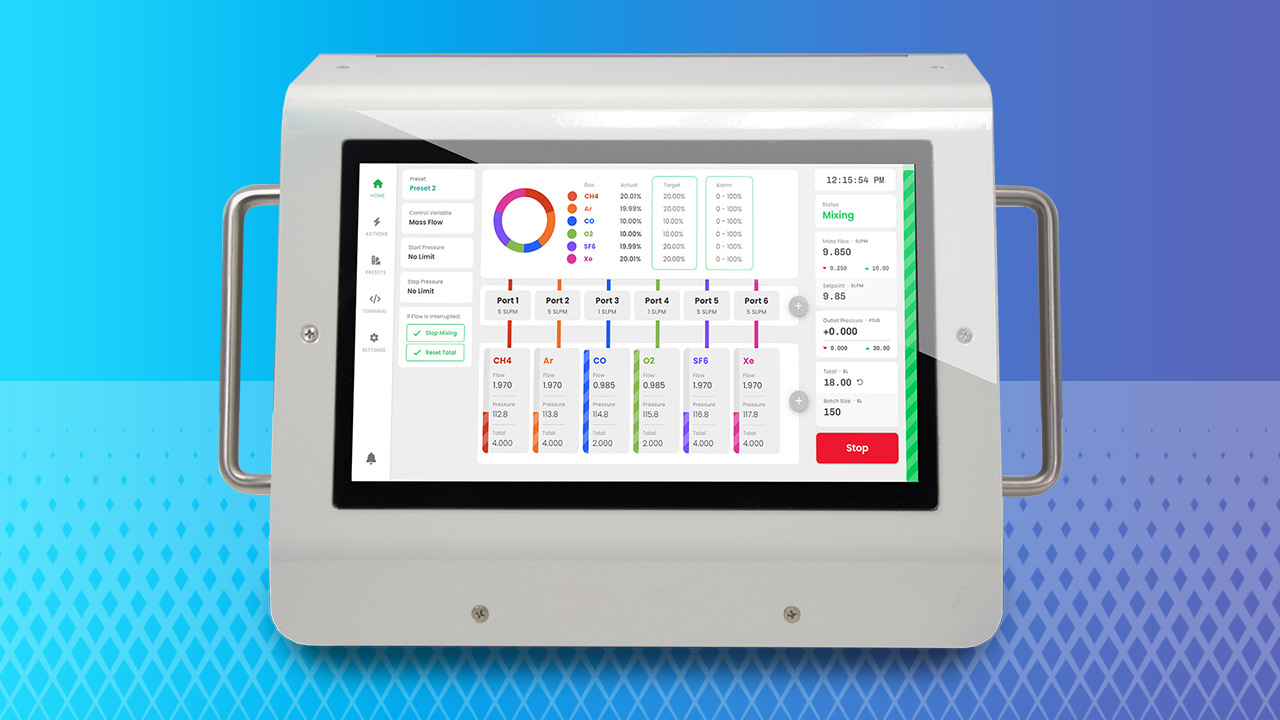· articles · 3 min read
What is a Gas Blending System?
There are many end-uses for gas blends with specified compositional ratios, from industrial packaging to scientific study.

Gas blending systems are used to create mixtures of different gases for specific uses. These mixtures, or blends, are typically specified by molar fraction as a percentage or as a parts-per unit. In gas blends where the parts-per-quantity units are preferred, the composition is usually expressed in parts per million (ppm), parts per billion (ppb) or parts per trillion (ppt). The Fusion Flow Technologies MXM platform was designed to mix gases in percent (%) level compositions, but with carefully selected pre-mixed gas cylinders, the MXM can also be designed to provide less than percent concentrations.
There are many end-uses for gas blends with specified compositional ratios, from industrial packaging to scientific study. Most gas blending systems are subsequently used by manufacturers who produce premixtures for specific niches within this broad market cross-section: breathing gas mixtures for diving, modified atmosphere packaging (MAP) gases for the food industry, and so on.
So, what goes into a gas blending system?
Gas Blending Systems: Important Things to Consider
Let’s first look at some of the key parameters you need to know in order to design the best gas blending system for your application. Firstly, you need to know the required mixture ratios by molar fraction as well as the different gases that you intend to mix using the system. Using a conventional laser gas mixture as an example, this could be expressed as 71.35% helium (He), plus 19.25% nitrogen (N2), plus 9.40% carbon dioxide (CO2). Many gas blending solutions are extremely high precision which means you can define the concentrations of multiple constituent gases per mixture with absolute confidence. This includes existing blends that you plan to dilute.
You also need to know the desired flow rate output for constant flow modes or the flow rate range for processes where usage varies over time. The most sophisticated gas blending systems utilize calibrated mass flow controllers (MFCs) to maintain flow rates for individual channels within the system. These work best within a scale range of 10 – 90% to achieve maximum reliability, and additional software controllers are required to adjust composition and flow rate of the mixed gas
Lastly, it is important to understand both the source pressure of the feed gases and the delivery pressure of the mixture to ensure that all mixing set points are maintained throughout the process. This is because virtually all gas blending methods are pressure- dependent. In perfect circumstances, you could mix gases together precisely by counting molecules – but this is impossible with today’s technology. This is closely approximated by molar flow measurement, commonly referred to as ‘mass flow measurement’.
Gas Blending Systems from Fusion Flow Technologies
At Fusion Flow Technologies, we understand that every application is different. We also know that relying on premixed gas cylinders can be costly and restrictive – but that the cost of ownership for established gas blending systems is often prohibitive. It is our aim to create effective tools for the on-demand delivery of precision mixed gases with the greatest possible control, repeatability, and reliability.
Once you have considered the parameters, we will be able to design and develop a tailor-made gas mixing platform based on either our modular or turnkey solution. Want to learn more about these industry-leading gas blending systems? Simply contact us today.
Questions? We have answers.
Chat for free with a gas mixing expert about your application today.